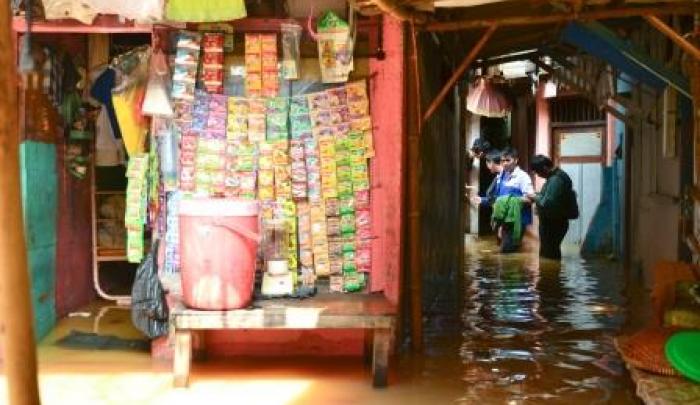Highlights
- As the world recognizes International Day for Disaster Reduction on 13 October, World Vision appeals to governments, development organizations and civil society to prioritize and strengthen the resilience of communities who are vulnerable to disasters, especially in Asia-Pacific.

BANGKOK (October 12, 2013) — As the world recognizes International Day for Disaster ReductionExternal Link on October 13, World Vision appeals to governments, development organizations and civil society to prioritize and strengthen the resilience of communities who are vulnerable to disasters, especially in Asia-Pacific.
According to the Asia Development Bank, for the past ten years 80 percent of disaster-related deaths globally have occurred in the Asia-Pacific. Over the past month, severe weather patterns have affected millions of people, tens of thousands who are now displaced with their crops and livestock destroyed.
“In the tragic aftermath of disasters, aid is incomplete without also helping affected communities to build back better and improve their ability to prevent or cope with future disasters,” said Christy Davis, World Vision’s Regional Advisor for Humanitarian & Emergency Affairs and Community Resilience. “Strengthening community resilience must be prioritized in any relief response and even more so for long-term development work.”
World Vision is at the forefront of disaster responses in the Asia-Pacific and is heavily invested in risk reduction as an integral component of the organization’s emergency management approach.
In China and Indonesia, two of the world’s most disaster-prone countries, World Vision works with schools and teachers to organize child-focused disaster risk reduction programs that provide interactive training to children through fun activities such as games, drawing, role-playing and singing. These activities help children identify early warning signs, become familiar with evacuation routes, and know what to do and how to protect themselves when a disaster strikes. This year, China alone has already endured 23 typhoons and several major earthquakes killing hundreds of people.
“With children being the most vulnerable in disasters, building resilience in their communities can protect and save lives,” Davis said. “We all share in the responsibility to help those who are vulnerable to disasters so that they can understand the hazards around them and develop coping mechanisms to prevent or at least minimize the impact of disasters.”
– END-
About International Disaster Reduction Day
The International Day for Disaster ReductionExternal Link (IDDR) was started in 2009 by the UN General Assembly to recognize the importance of communities working to reduce their risks to disasters and to encourage citizens and governments alike to take part in building more disaster resilient communities and nations. The theme this year focuses on people with disabilities who are among the world’s most vulnerable, and whose plight is magnified when a disaster strikes.
About World Vision:
World Vision is a Christian humanitarian organization conducting relief, development, and advocacy activities in its work with children, families, and their communities in nearly 100 countries to help them reach their full potential by tackling the causes of poverty and injustice. World Vision serves all people regardless of religion, race, ethnicity, or gender. For more information, please visit www.WorldVision.org/media-center/ or on Twitter @WorldVisionUSA.